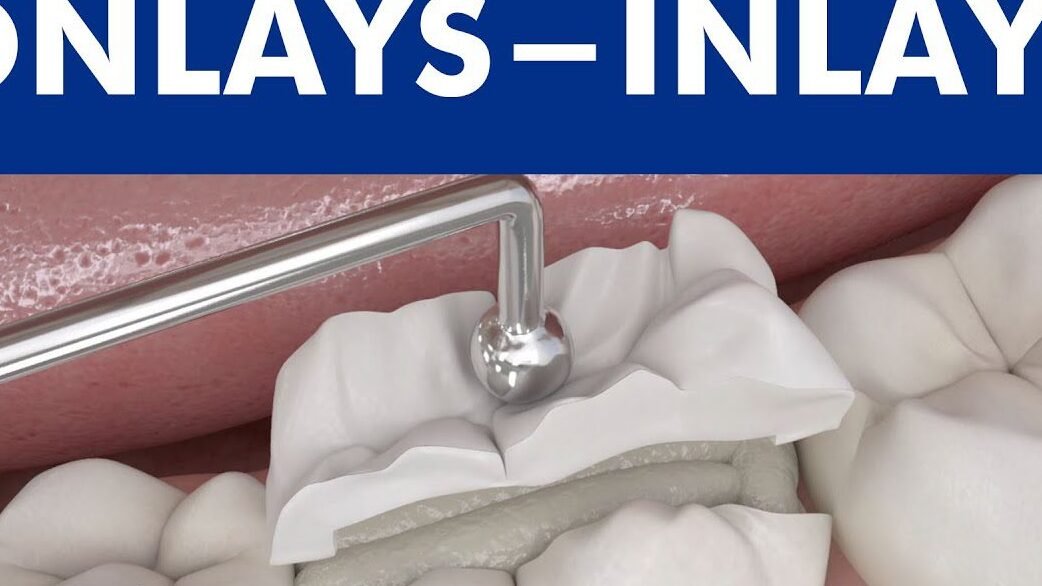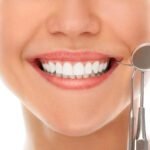Table of Contents
Benefits of inlays and onlays in dental restorations
Inlays and onlays offer numerous benefits in the realm of dental restorations. These custom-made fillings are crafted to fit precisely within the contours of a tooth, providing a seamless and durable solution for addressing mild to moderate tooth decay or damage. Unlike traditional fillings that can weaken the tooth structure, inlays and onlays actually strengthen the tooth, helping to preserve its natural integrity for a longer period of time.
| Aspect | Description |
|---|---|
| Procedure | Inlays and onlays |
| Purpose | Dental restorations for damaged teeth |
| Material | Porcelain, composite resin, or gold |
| Process | Tooth preparation, impression, custom fabrication, bonding |
| Durability | Longer-lasting than fillings, more conservative than crowns |
| Preservation | Preserves more natural tooth structure compared to crowns |
| Strength | Offers greater strength and stability than fillings |
| Aesthetics | Blends seamlessly with natural tooth color and shape |
| Maintenance | Regular dental hygiene, routine check-ups |
Moreover, the aesthetic appeal of inlays and onlays is worth noting. These restorations can be fabricated from materials such as porcelain or composite resin, which closely mimic the natural color and translucency of teeth. This not only enhances the overall look of the smile but also ensures a more natural and harmonious appearance. Additionally, the smooth surface of inlays and onlays helps to reduce plaque accumulation and makes maintaining oral hygiene easier for the patient.
Difference between inlays, onlays, and traditional fillings
Inlays, onlays, and traditional fillings are all dental restorative treatments used to repair damaged teeth. Inlays are custom-made fillings fabricated in a dental laboratory to fit within the cusps of a tooth, providing a durable and precise restoration. Onlays, on the other hand, are more extensive than inlays as they cover one or more cusps of a tooth, making them suitable for larger areas of decay. Traditional fillings, also known as direct fillings, are placed directly into the cavity preparation and are often made of materials like composite resin or amalgam.

The key distinction between inlays, onlays, and traditional fillings lies in the extent of tooth coverage and the fabrication process. While inlays and onlays offer a more conservative approach by preserving more natural tooth structure compared to traditional fillings, they require multiple visits to the dentist for placement. Additionally, inlays and onlays are typically made from stronger materials like ceramic, porcelain, or composite resin, providing enhanced durability and aesthetic benefits over traditional filling materials.
Materials used in creating inlays and onlays
In the meticulous craft of creating inlays and onlays for dental restorations, various materials are utilized to ensure optimal functionality and aesthetic appeal. Common materials employed in the fabrication of these custom restorations include porcelain, composite resin, and sometimes even gold alloys. These materials are selected based on factors such as durability, biocompatibility, and the location of the restoration within the mouth. Porcelain, known for its natural appearance and stain resistance, is often preferred for inlays and onlays in visible areas, while composite resin offers versatility in color matching and bonding capabilities. Gold alloys, although less commonly used today, are prized for their longevity and wear resistance, making them suitable for high-stress areas like molars.
The choice of material for inlays and onlays is crucial in ensuring the longevity and success of the restoration. Each material possesses unique properties that influence its performance in the oral environment. For instance, porcelain inlays and onlays are highly esthetic and can be precisely matched to the natural color of the teeth, making them ideal for restorations in the front teeth.
On the other hand, composite resin inlays and onlays offer excellent versatility and can be bonded directly to the tooth structure, providing a conservative yet durable restoration option. Gold alloys, while less popular due to their appearance, remain a viable choice for patients seeking long-term durability and strength in their restorations, particularly in areas prone to heavy chewing forces.
Process of placing inlays and onlays in teeth
Inlays and onlays are dental restorations that are used to repair teeth that have mild to moderate decay or damage. The process of placing inlays and onlays typically involves two appointments to the dentist. During the first visit, the dentist will prepare the affected tooth by removing the decayed or damaged portion and taking an impression of the tooth. This impression is then sent to a dental laboratory where the inlay or onlay is custom-made to fit the tooth precisely. In the second appointment, the dentist will carefully place the inlay or onlay onto the tooth surface and bond it securely in place using a special dental adhesive.

The placement of inlays and onlays in teeth is a precise and meticulous procedure that requires the expertise of a skilled dentist. The materials used for inlays and onlays, such as porcelain, composite resin, or gold, are durable and long-lasting, providing a strong and natural-looking restoration for the tooth. With proper care and maintenance, inlays and onlays can last for many years, offering patients a reliable and aesthetically pleasing solution for restoring their oral health.
Indications for using inlays and onlays in dental treatment
When considering the use of inlays and onlays in dental treatment, several indications point to the suitability of these restorations. In cases where there is moderate to severe damage to a tooth that may not be effectively addressed by a traditional filling but does not require a full dental crown, inlays and onlays offer a conservative yet durable solution.
Additionally, when the cusps of a tooth are affected by decay or damage, onlays provide a reliable method to restore the structure and function of the tooth while preserving more of the natural tooth compared to a crown. The ability of inlays and onlays to strengthen and protect the remaining tooth structure makes them a valuable option in situations where conservation of healthy tooth material is a priority.
Furthermore, inlays and onlays are often recommended for patients who have cracked or fractured teeth where the damage extends beyond what a filling can effectively repair. By customizing these restorations to fit precisely within the prepared tooth structure, inlays and onlays can help reinforce the tooth and prevent further deterioration. Their precise fit and superior aesthetics make them particularly suitable for teeth that are visible in the smile line, providing a seamless and long-lasting solution for both functional and cosmetic concerns.
Advantages of inlays and onlays over other restorative options
Inlays and onlays offer several advantages over traditional fillings when it comes to restoring damaged teeth. One key benefit is their superior strength and durability, as they are custom-made from strong materials such as porcelain, composite resin, or gold. This durability allows them to withstand the forces of chewing and last longer than conventional fillings, reducing the need for frequent replacements. Additionally, inlays and onlays provide a precise and snug fit within the tooth, which helps to strengthen the remaining tooth structure and prevent further decay or damage.
| Aspect | Inlays and Onlays | Other Restorative Options |
|---|---|---|
| Preservation | Preserve more natural tooth structure | May require more tooth reduction |
| Durability | Offer greater longevity | Fillings may wear down or deteriorate faster |
| Strength | Provide better strength | Fillings may weaken tooth structure over time |
| Aesthetics | Blend seamlessly with natural teeth | Crowns may be more noticeable |
| Conservative | More conservative approach | Other options may require extensive tooth preparation |
| Material Options | Offer various material choices | Limited material options for some options |
Another advantage of inlays and onlays is their ability to conserve tooth structure. Unlike traditional fillings, which require the removal of a significant portion of healthy tooth structure to create a stable base for the filling material, inlays and onlays are bonded directly onto the tooth surface. This minimal preparation preserves more of the natural tooth structure, promoting long-term oral health and reducing the risk of complications like fractures or sensitivity. By preserving more of the tooth’s natural structure, inlays and onlays can help maintain the integrity and strength of the tooth over time.
Potential complications of inlays and onlays
In rare cases, complications may arise following the placement of inlays and onlays, although they are generally considered safe and effective dental restorations. One potential complication is the development of sensitivity to hot or cold temperatures after the procedure. This sensitivity typically subsides over time as the tooth adjusts to the new restoration, but in some instances, it may persist and require further evaluation by a dentist.
Another possible complication is the occurrence of a loose or dislodged inlay or onlay. This can happen if the restoration was not properly bonded to the tooth or if there is excessive pressure placed on it during chewing. In such cases, it is important to seek prompt dental attention to address the issue and prevent further damage to the tooth. Regular dental check-ups can help detect any potential complications early on and ensure the longevity and effectiveness of inlays and onlays in preserving dental health.
Longevity of inlays and onlays compared to other restorations
Inlays and onlays are known for their exceptional longevity when compared to traditional fillings. These custom-made restorations are crafted from durable materials such as porcelain, composite resin, or gold, which contribute to their robust nature. With proper care and maintenance, inlays and onlays can last significantly longer than typical fillings, making them a reliable choice for patients seeking lasting dental solutions.

Research has shown that inlays and onlays have a higher success rate and longevity compared to direct fillings, as they provide a more stable and secure restoration for teeth that have suffered moderate to severe damage. The precise fit and bonding of inlays and onlays to the tooth structure help to strengthen the remaining tooth structure, reducing the risk of fractures or recurrent decay. Consequently, patients can enjoy the benefits of inlays and onlays for many years, fostering oral health and preserving the integrity of their natural teeth.
Cost considerations for inlays and onlays
When considering the cost of inlays and onlays, it’s important to understand that these restorative dental procedures may have a higher initial price tag compared to traditional fillings. The materials used in creating inlays and onlays, such as porcelain or composite resin, are of high quality and can be more expensive. Additionally, the precision and customization involved in crafting and placing inlays and onlays contribute to their overall cost. However, it’s essential to recognize that the longevity and durability of inlays and onlays can lead to cost savings in the long run.
These restorations are known for their strength and resistance to wear, offering a more sustainable solution for tooth repair compared to standard fillings. When factoring in the extended lifespan and reduced need for replacements, inlays and onlays can be a cost-effective choice for many patients in the long term.
Furthermore, the cost of inlays and onlays may vary depending on the complexity of the dental issue, the materials used, and the geographic location of the dental practice. It’s advisable to consult with your dentist to discuss the specifics of your case and obtain a personalized cost estimate for inlays or onlays. Some dental insurance plans may cover a portion of the cost of these restorations, so it’s recommended to check with your provider to understand your coverage.
Additionally, many dental practices offer financing options or payment plans to help make inlays and onlays more financially accessible for patients. Prioritizing your oral health and seeking high-quality restorative treatments like inlays and onlays can ultimately lead to better outcomes and a healthier smile in the long term.
Maintenance and care tips for inlays and onlays
Proper care and maintenance of inlays and onlays are essential to ensure their longevity and effectiveness in restoring dental health. Brushing your teeth at least twice a day with a soft-bristled toothbrush and fluoride toothpaste is crucial in keeping your inlays and onlays clean. Flossing daily helps remove food particles and plaque from between teeth and around the restorations, preventing decay and gum disease.
Regular dental check-ups and cleanings are important for monitoring the condition of your inlays and onlays, as well as detecting any issues early on. Your dentist may recommend using a mouthwash with fluoride to strengthen your enamel and protect the restorations. Avoid habits like nail-biting, chewing on hard objects, or using your teeth to open packages, as these can damage the inlays and onlays. Following these maintenance tips will help preserve the integrity of your dental restorations and support your overall oral health.
Common misconceptions about inlays and onlays
One common misconception about inlays and onlays is that they are purely cosmetic dental procedures. While these restorations can indeed improve the appearance of a tooth by restoring its shape and color, their primary function is to repair and strengthen damaged teeth. Inlays and onlays are durable and long-lasting solutions for teeth with moderate to severe decay or structural damage, offering both aesthetic and functional benefits.
Another misconception is that inlays and onlays are expensive compared to traditional fillings. While the initial cost of inlays and onlays may be higher than that of fillings, their longevity and durability often make them a more cost-effective option in the long run. Inlays and onlays can last much longer than fillings, reducing the need for frequent replacements and potential complications down the road. Additionally, inlays and onlays provide greater stability and support to the tooth structure, which can help prevent further damage and the need for more extensive dental work in the future.
Case studies showcasing successful inlay and onlay restorations
In a recent case study, a patient presented with a large cracked amalgam filling on a molar. The decision was made to replace the failing filling with an inlay to provide a more durable and aesthetically pleasing restoration. Utilizing CAD/CAM technology, a custom ceramic inlay was fabricated and bonded to the tooth, restoring its function and appearance effectively. The patient reported improved chewing comfort and expressed satisfaction with the natural look of the inlay.
Another compelling case involved a patient with extensive decay on a premolar tooth, necessitating a more extensive restoration than a conventional filling could provide. An onlay was chosen as the ideal treatment option due to its ability to cover the cusps of the tooth and provide greater structural support. The onlay, made from a high-strength composite material, was precisely fitted and cemented in place, restoring the tooth’s strength and preventing further damage. The patient reported no sensitivity post-treatment and was pleased with the seamless integration of the onlay into their natural dentition.
Innovations in inlay and onlay technology
In recent years, advancements in dental technology have significantly improved the design and fabrication of inlays and onlays, leading to more precise and durable restorations. Computer-aided design (CAD) and computer-aided manufacturing (CAM) technologies have revolutionized the process of creating custom inlays and onlays. These technologies allow for highly detailed digital impressions of the tooth, enabling the creation of restorations that fit perfectly and blend seamlessly with the natural tooth structure. The use of 3D printing in the production of inlays and onlays has also gained momentum, offering enhanced accuracy and efficiency in the manufacturing process.
Moreover, the development of new materials, such as zirconia and lithium disilicate, has expanded the options for inlay and onlay restorations, providing increased strength and aesthetics compared to traditional materials. These innovative materials offer improved durability, resistance to wear, and better color matching with natural teeth. With ongoing research and advancements in materials science, the field of inlay and onlay technology continues to evolve, offering patients more reliable and aesthetically pleasing treatment options for dental restorations.
Patient testimonials on their experience with inlays and onlays
One patient, Sarah, shared her positive experience with inlays and onlays, expressing how impressed she was with the natural look and feel of the restorations. She mentioned that her inlay procedure was seamless, and she appreciated the precise fit that improved the aesthetics of her smile. Sarah highlighted how her inlays provided a durable solution for her damaged teeth, restoring both function and beauty to her dental health.
Similarly, Mark, another patient who opted for onlays, emphasized how the procedure exceeded his expectations in terms of comfort and durability. He noted that the onlays seamlessly blended with his natural teeth, enhancing the overall appearance of his smile. Mark explained that the process was efficient, and he felt reassured by the strength and longevity of the onlays. His testimonial emphasized the significant impact that inlays and onlays can have on both oral health and confidence.
Tips for finding a qualified dentist for inlay and onlay procedures
When seeking a dentist for inlay and onlay procedures, it is crucial to prioritize qualifications and experience. Look for a dentist who has specialized training in restorative dentistry and a track record of successful inlay and onlay placements. Additionally, consider asking about the dentist’s familiarity with the latest technologies and techniques in this field to ensure you receive the best possible care.
Furthermore, don’t hesitate to inquire about patient testimonials or before-and-after photos of previous inlay and onlay cases. Reading about other patients’ experiences and seeing visual examples of the dentist’s work can provide valuable insight into what you can expect from your own treatment. Remember, finding a qualified dentist for inlay and onlay procedures is an essential step in ensuring a successful and long-lasting dental restoration.
How can I find a qualified dentist for inlay and onlay procedures?
When searching for a dentist to perform inlay and onlay procedures, it is important to look for someone who has experience and expertise in restorative dentistry. You can ask for recommendations from friends, family, or your regular dentist. Additionally, you can research online and read reviews to find a reputable dentist in your area. It is also a good idea to schedule a consultation to discuss your treatment plan and ask any questions you may have before proceeding with the procedure.
What qualifications should I look for in a dentist for inlay and onlay procedures?
Look for a dentist who has completed additional training or certifications in restorative dentistry, specifically in the placement of inlays and onlays. Check to see if the dentist is a member of any professional organizations related to restorative dentistry, as this can be an indication of their commitment to continuing education and excellence in their field. It is also helpful to inquire about the dentist’s experience with inlay and onlay procedures and ask to see before and after photos of previous cases they have worked on.
Are there any red flags to watch out for when selecting a dentist for inlay and onlay procedures?
Be cautious of dentists who do not have much experience with inlays and onlays or who are unable to answer your questions about the procedure in detail. Additionally, be wary of dentists who make unrealistic promises or offer significantly lower prices than other providers, as this could indicate subpar materials or techniques. Trust your instincts and choose a dentist who makes you feel comfortable and confident in their abilities to perform the procedure successfully.




